Hack Browser Data is an open-source tool that can help you decrypt data (passwords, bookmarks, cookies and history) from the browser. It supports the most popular browsers on the market and runs on Windows, macOS, and Linux.
Hack Browser Data Features
Supports most popular browsers like Google Chrome, Firefox. It can run on Windows, macOS and Linux. It can pull the following data from the browser.
Passwords
Bookmarks
Cookies
History
When performing a penetration test, instead of searching these data individually from the browser, using the Hack Browser Data tool to see them in a list in the folder will provide an important convenience and speed.
Supported Browsers
On Windows devices:
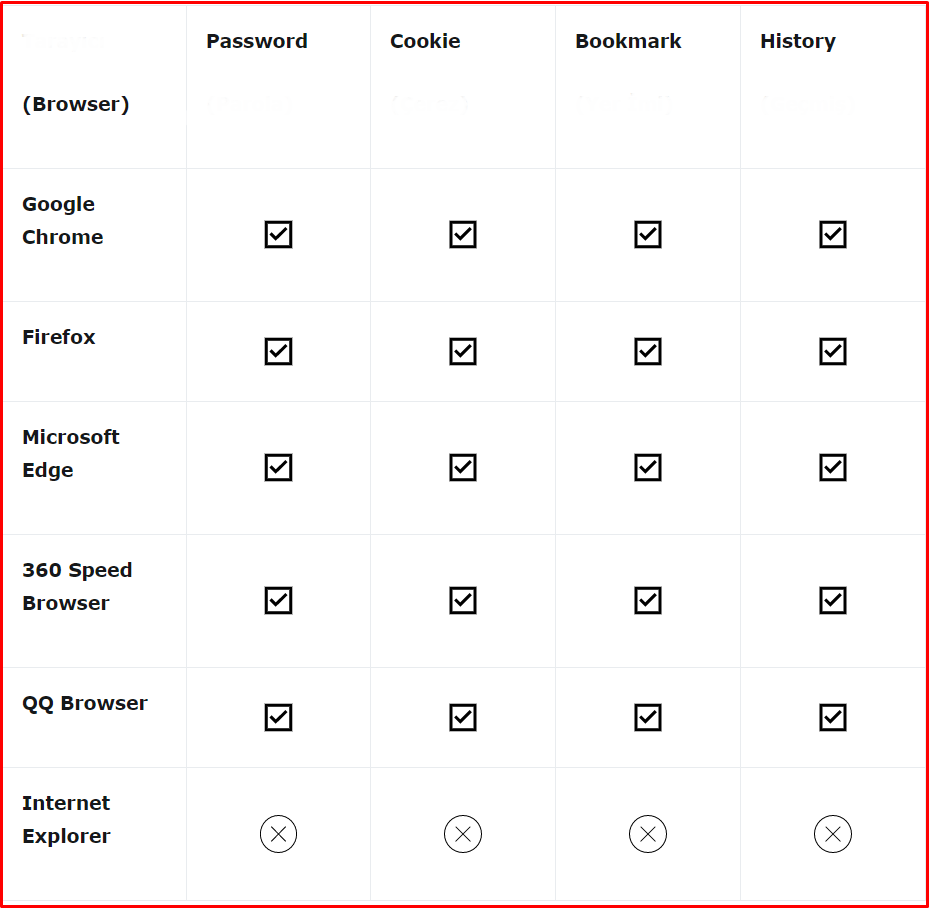
On macOS devices:
According to Apple’s security policy, it is also necessary to enter an up-to-date “user password” in order to capture passwords in some browsers.
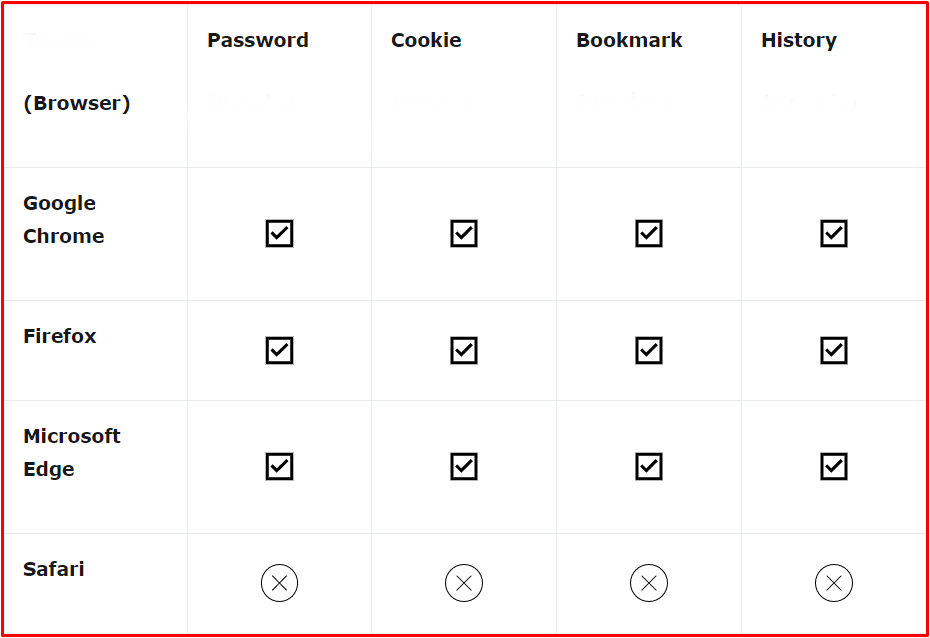
On devices using Linux:
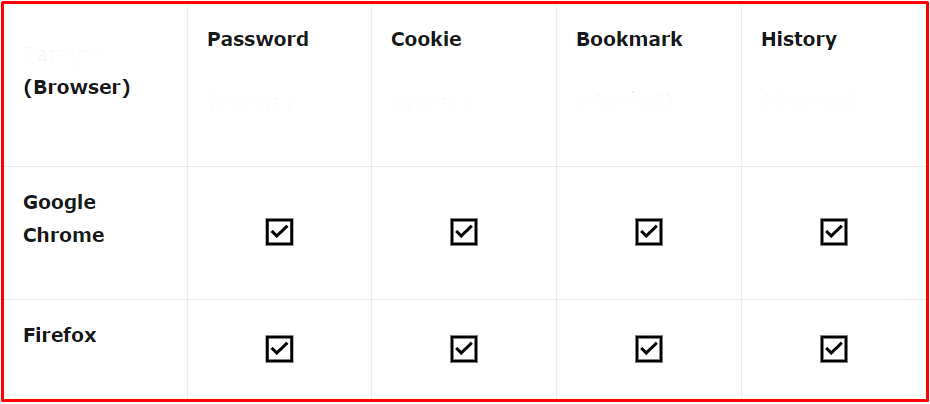
Hack Browser Data Installation
It can be downloaded from the link below for Linux, Windows and macOS.
We will demonstrate the installation and use of the tool for Windows with examples. First, we download the zip file below, which is in the link.
https://github.com/moonD4rk/HackBrowserData/releases
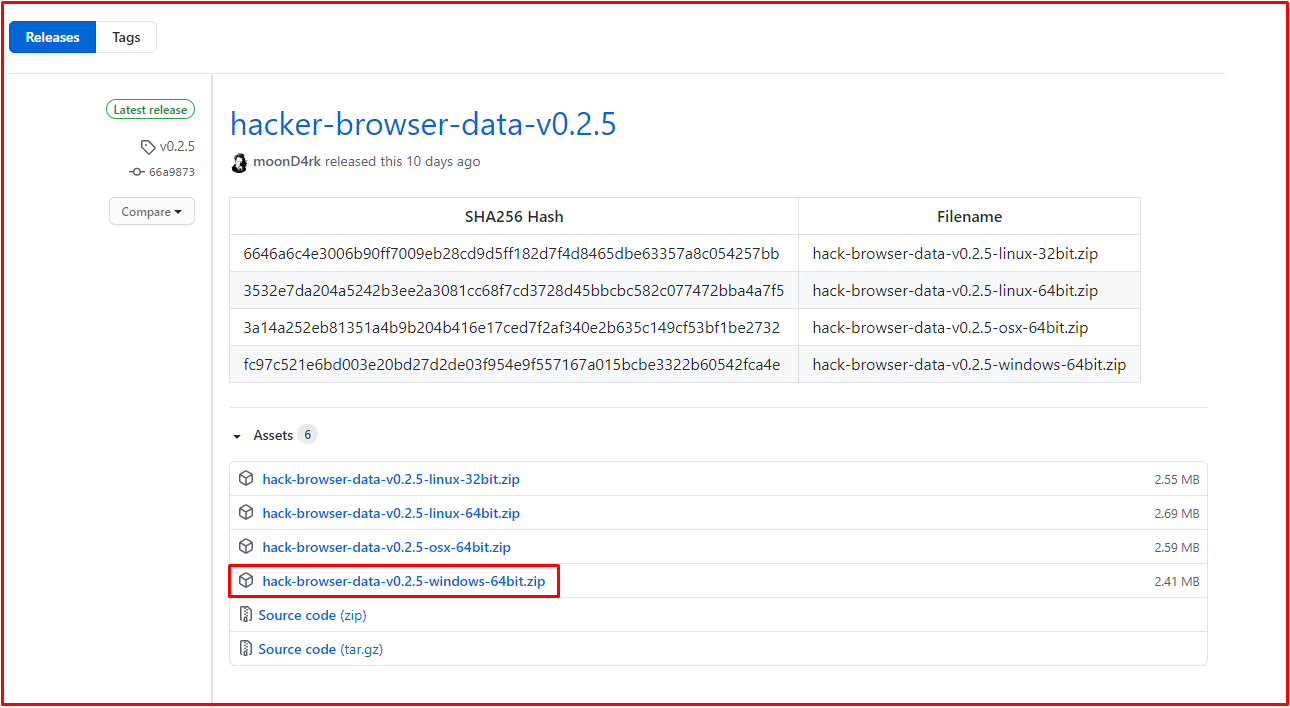
After opening the .zip file, we run the command “. \ hack-browser-data.exe -h” with an administrator account from the command line and we list the user manual (help file) of our tool and the necessary parameters.
C:\Users\ÖMER\Downloads\hack-browser-data-v0.2.5-windows-64bit>.\hack-browser-data.exe -h
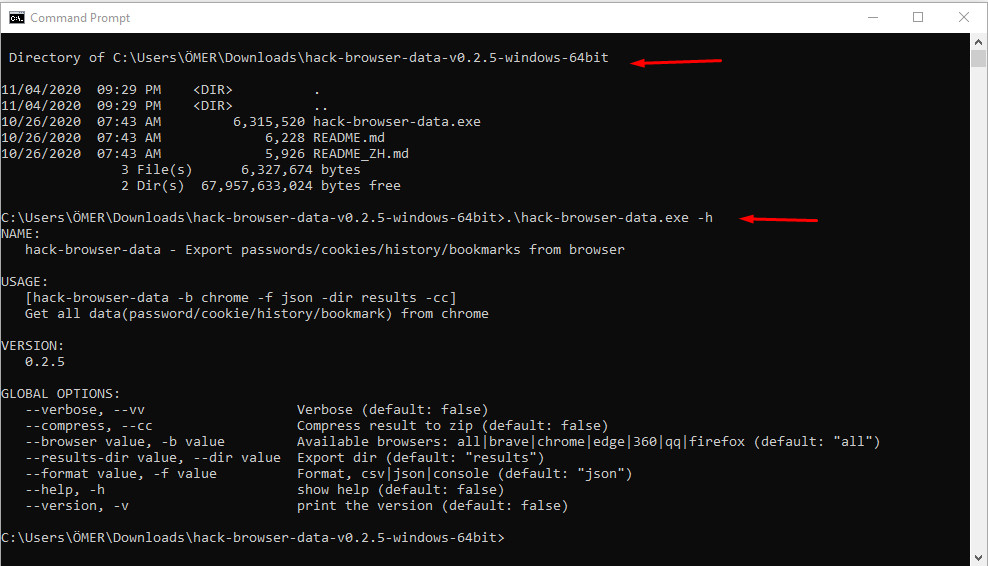
Example
We opened our .zip file and after seeing the required parameters, we will now make an example for our test computer. At first, we run the following command.
hack-browser-data -b all -f csv -dir results -cc
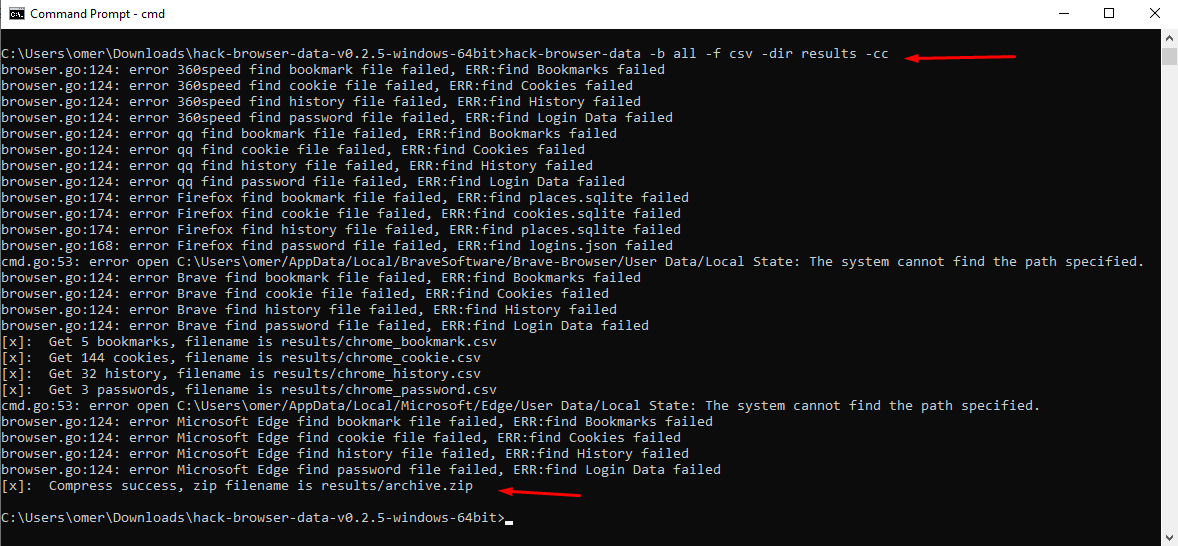
Explanation of Commands:
hack-browser-data: By typing the parameter, we inform the command line which tool to use.
-b all: With the parameter, we want to scan all browsers installed on our computer and supported by HackBrowserData tool.
-f csv: We want the tool to save the output it will give me in Excel format.
-dir results -cc: We want it to create a file named results, save the results as a zip file.
When we run the program, a “results” file and a .zip folder named “archive” are created. We open the zip “Archive” calender. Thus, in the folder named “archive“, the history, saved bookmarks, cookies and passwords of 3 different browsers are listed in Excel file format.
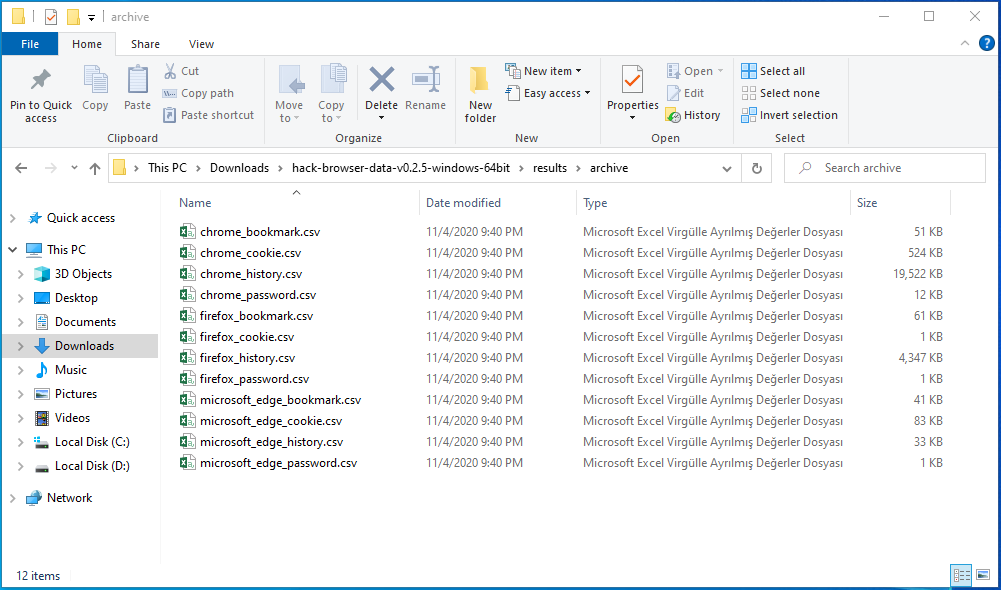
Google Chrome
Now let’s examine all the information the tool has obtained from Google Chrome.
Google Chrome Bookmark File
The Chrome Bookmark file shows the bookmarks we previously saved in the Google Chrome browser.
In the picture below, we have seen that it has been obtained by the SYSTEMCONF tool, which we have saved in bookmarks.
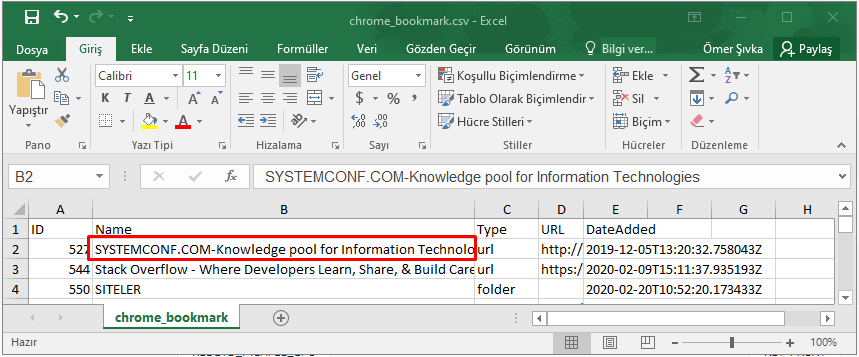
Google Chrome Password File
We saw the passwords saved in the Google Chrome browser in the Chrome password file.
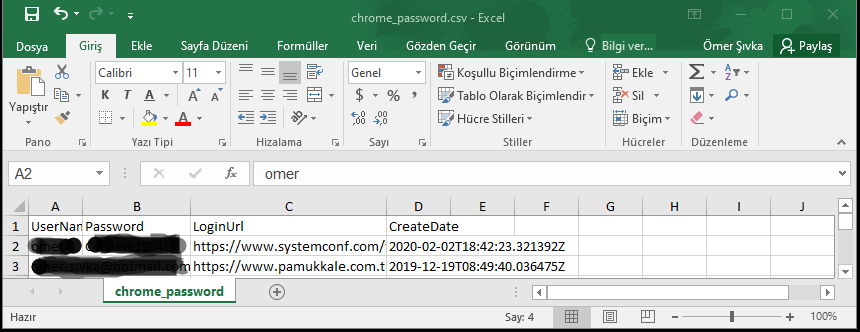
Google Chrome History File
The Google Chrome History file shows the history saved in the Chrome browser.
The pages we have visited in the picture below can be listed by the tool.
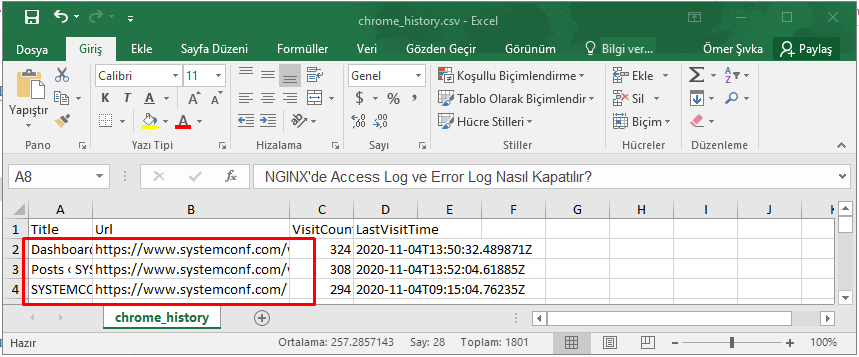
Google Chrome Cookie File
In the Chrome Cookie File, cookies saved in the Google Chrome browser can be seen.
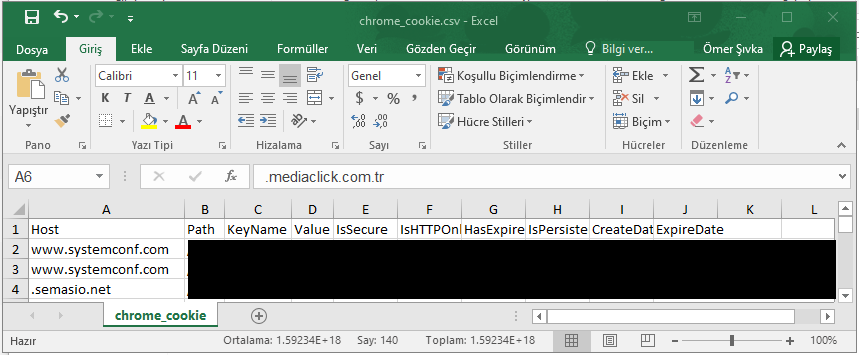
As can be seen from the screenshots above, Hack Browser Data tool has obtained all the data in the browser, filed them and made it ready for the easy use of the person who captured this data.




